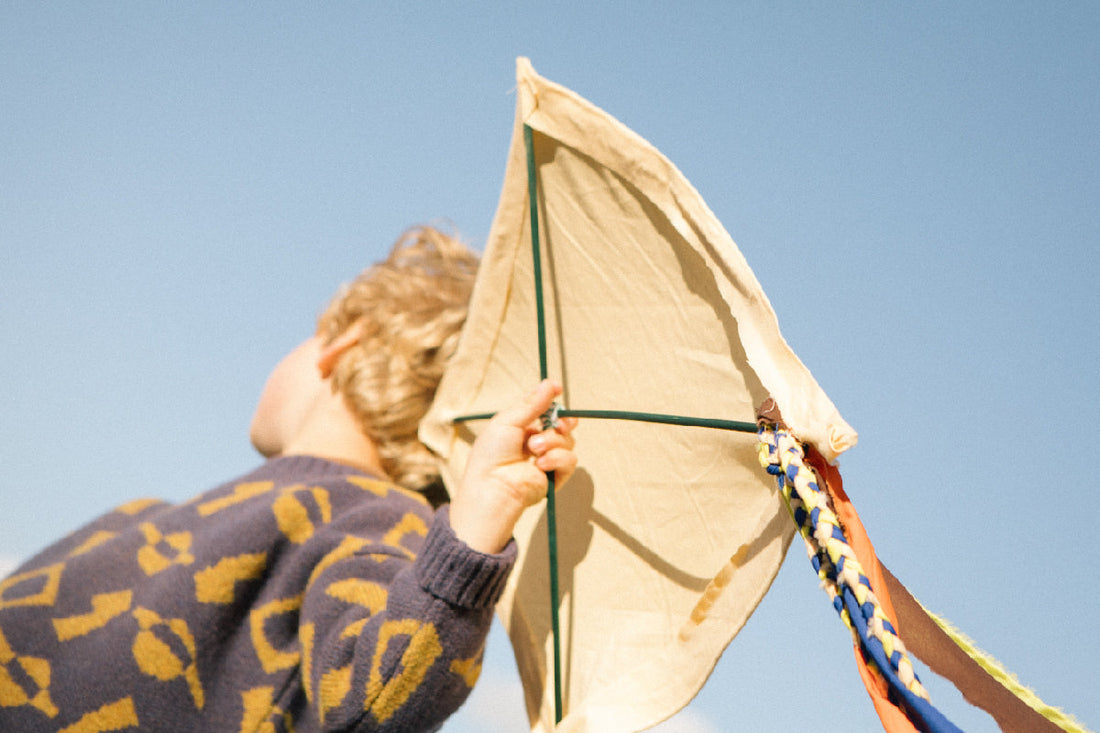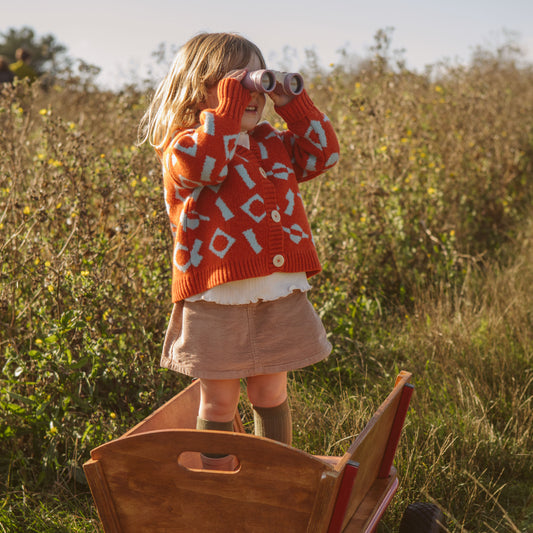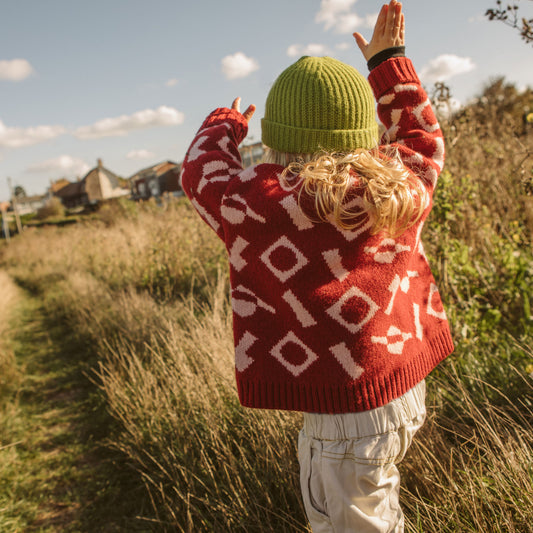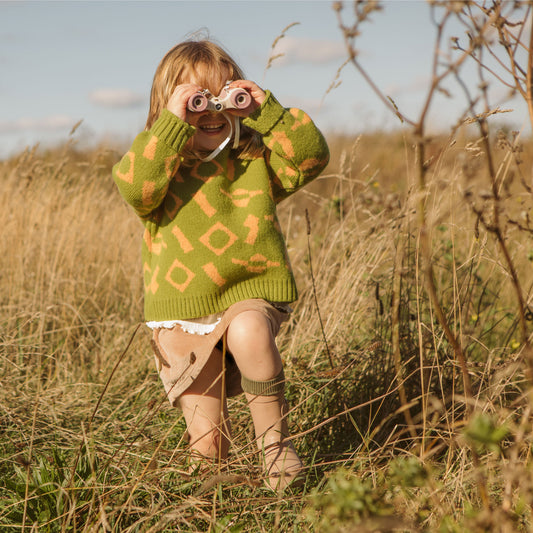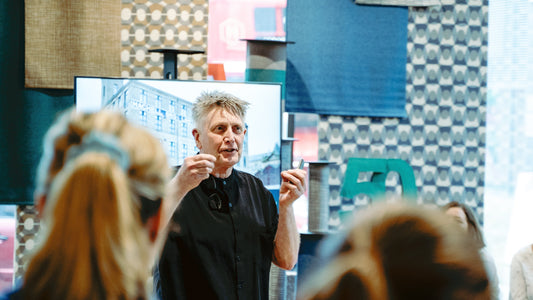The circular economy is a system where resources are kept in use for as long as possible — by reusing, repairing, and recycling — rather than being thrown away.
We’re used to hearing about the circular economy and how it could be the future for the fashion industry. Rentals, preloved and vintage are booming in the kidswear industry right now, and rightfully so. But what is circular fashion really, and why is it important for kids' clothing?
It’s no secret that fast fashion is harmful to the planet. According to the Ellen MacArthur Foundation, the fashion industry as a whole is producing twice as many clothes as it was in the early 2000s, but the number of times each garment is worn is decreasing significantly. This means that ultimately, we have never produced more clothes, and we have never worn them less.
Circular fashion offers a way to reduce waste and pollution by changing how clothes are made, used, and disposed of. It aims to address this growing crisis by providing a new approach to the way we design and consume clothing.
LINEAR BUSINESS MODELS

Traditionally, fashion businesses are modelled on a take, make, waste approach. This is known as a linear business model. The resources needed to make clothes are taken from the earth, clothing is made from these resources and materials, and once worn, it ultimately goes to waste.
Much of the global fashion industry is built on this model, leading to the current situation in which, of all the materials used to make clothes, 87% end up in landfill or are burnt. Hardly any of this is reused or recycled into new textiles (less than 1%, in fact). The Ellen MacArthur Foundation points out that in this system, not only are all of the resources extracted from the planet completely lost, but so are the creative ideas that went into their making.
CIRCULAR BUSINESS MODELS

In a business model that is based on circularity, waste is effectively designed out of the process entirely.
Products are designed for longevity, so that their quality means they can outlast several end users. They are designed with the end of their lifecycle in mind, meaning the way they will be disposed of or remade is decided at the design stage. Resale and rental can play an important role in extending the use of the garment before its end of life, but they are not the only ways a circular business functions.
This effectively creates a business model that has a circular approach. As opposed to the 'take - make - waste' of a linear system, we are embracing a 'take - make - resell / repair / recycle - remake' approach, in which the resources used to create the garment stay within the same system in order to be infinitely reused.
WHY IS CIRCULARITY RELEVANT FOR KIDSWEAR?
There is a lot of talk about why circularity is important for kidswear. One of the fundamental principles in circular economy thinking is designing for longevity. For adults, this is relatively simple in terms of a behavioural shift for consumers — buy less, spend a little more, and wear it for much longer. It’s something we can all at least get our heads around, and some of us may have even adopted this type of shopping in our own wardrobes. It’s something we, as consumers, can practice ourselves as a way to vote with our money when it comes to fashion.
With most kids growing through seven sizes of clothing in their first year, this is so much harder to practice with children. We can’t buy for longevity because they don’t wear their clothes for very long at all before needing a bigger size.
This presents a lot of opportunities for circularity, and it’s why we have seen a boom in rental, second-hand and vintage in the kidswear market recently. This is great, as it keeps products in circulation for longer and shares them between the little end users that wear them, helping parents save time and money while helping the planet.
While resale and rental is fantastic, and has helped move the dial when it comes to attitudes towards second-hand, it’s not the whole story. If a product from a linear system is rented or resold, it certainly helps, but it doesn’t completely solve the problem of waste if the product then goes to landfill.
For true circularity to exist, the question becomes: how can we create a product that can outlast several little end users, enable it to be circulated, and ensure it is recycled or remade at the end of its lifecycle?
This is what we are aiming for at Talou. And this is why we have both a resale initiative in place, as well as our pioneering project to create our own recycled yarns with products from Save The Children’s Mary's Living & Giving charity shops.
Circularity is a journey, and we may never be able to say we are a 100% circular company. But we are on a journey, and that’s what we’re aiming for. Because we believe brands should do the work to keep their products sustainable, so you can enjoy them knowing you’re making a fair choice for the planet.

